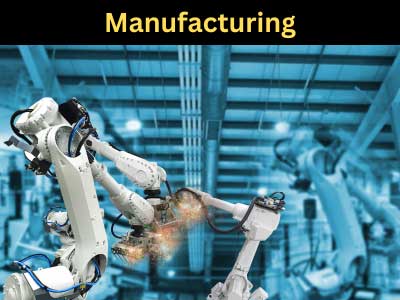Key Takeaway
Industry 4.0 presents several challenges, including the integration of advanced technologies with existing systems. Many companies struggle with the cost and complexity of upgrading legacy IT infrastructure to support new digital tools. Another significant challenge is the skills gap within the workforce, as many employees lack the training to operate and maintain these advanced systems.
Operational challenges also arise from the need for interoperability between various devices and platforms. Additionally, cybersecurity concerns grow as more connected devices are introduced. Addressing these challenges requires investment in technology, training, and a strong cybersecurity framework to fully realize the benefits of Industry 4.0.
Integration of Legacy Systems with Industry 4.0 Technologies
One of the main challenges companies face when transitioning to Industry 4.0 is integrating legacy systems with modern technologies. Many manufacturing facilities still rely on outdated systems that are incompatible with new smart devices, IoT platforms, and advanced automation tools. This creates a technological gap, making it difficult for businesses to seamlessly integrate these systems without significant overhauls or expensive upgrades.
Companies often find themselves at a crossroads, having to either replace older machines and systems altogether or invest in software that bridges the gap between legacy systems and new Industry 4.0 innovations. This transition requires careful planning to avoid disrupting existing production lines and ensures that the facility remains operational during the upgrade process. Successfully navigating this integration challenge is essential for maximizing the benefits of Industry 4.0 technologies.

Cybersecurity Threats and Data Protection
With the increasing reliance on interconnected devices and data-driven operations, cybersecurity becomes a major concern in Industry 4.0. Smart factories and IoT devices are vulnerable to cyberattacks that can disrupt production, steal sensitive data, or even damage equipment. These threats make it critical for businesses to implement robust cybersecurity protocols.
The challenge lies in balancing the need for connectivity with the necessity of protecting sensitive data. Industry 4.0 systems generate massive amounts of data, and without proper security measures, this data becomes a target for hackers. Businesses must invest in advanced security solutions like encryption, firewalls, and network monitoring tools to safeguard their operations. Educating employees on cybersecurity best practices is equally important to prevent breaches caused by human error.
Workforce Training and Skill Gaps
Industry 4.0 technologies require new skill sets, and many workers are unfamiliar with these advanced systems. As automation, AI, and data analytics become integral to production, businesses face the challenge of upskilling their workforce to operate, maintain, and optimize these technologies. The gap between traditional manufacturing skills and the expertise needed to work in a smart factory creates a significant hurdle for companies looking to implement Industry 4.0 solutions.
To bridge this gap, businesses need to invest in employee training and development programs. This includes teaching workers how to use new tools and technologies and helping them adapt to new workflows that emphasize data-driven decision-making. Upskilling and reskilling initiatives not only empower employees to remain relevant but also ensure that businesses can fully leverage the capabilities of Industry 4.0 technologies.
High Initial Costs and ROI Concerns
The financial commitment required to transition to Industry 4.0 is another major challenge for businesses, particularly for small and medium-sized enterprises (SMEs). Upgrading machinery, implementing IoT systems, and integrating AI-driven analytics involve significant capital expenditure. Additionally, businesses may need to overhaul their infrastructure to support the increased data flow and connectivity.
This upfront investment can be daunting, especially when businesses are uncertain about the return on investment (ROI). The benefits of Industry 4.0 technologies, such as increased efficiency, reduced downtime, and improved product quality, often take time to materialize. Businesses must develop long-term strategies that justify the initial costs while considering scalability and gradual implementation to spread the financial burden.
Managing Data Overload in Industry 4.0
As Industry 4.0 systems generate vast amounts of data, managing this data becomes an increasingly difficult task for businesses. Factories equipped with IoT devices, sensors, and automation platforms are constantly collecting real-time data, and businesses need to figure out how to process and utilize this data effectively.
The challenge is twofold: businesses must ensure they have the infrastructure to handle data storage and processing while also developing the capabilities to analyze and derive actionable insights from this data. Without proper data management systems in place, businesses risk becoming overwhelmed by the sheer volume of information, potentially missing out on opportunities to improve efficiency, predict maintenance needs, or enhance product quality.
Conclusion
Adopting Industry 4.0 technologies presents several challenges, from integrating legacy systems to addressing cybersecurity risks and managing data overload. High upfront costs and workforce training gaps further complicate the transition for many businesses. However, with careful planning, strategic investments, and a commitment to upskilling employees, businesses can successfully overcome these challenges and fully embrace the benefits of Industry 4.0.
By focusing on long-term goals and leveraging data analytics, businesses can unlock new levels of efficiency, productivity, and innovation. Industry 4.0 is not without its hurdles, but those who navigate these challenges effectively will be well-positioned to thrive in the future of manufacturing.
